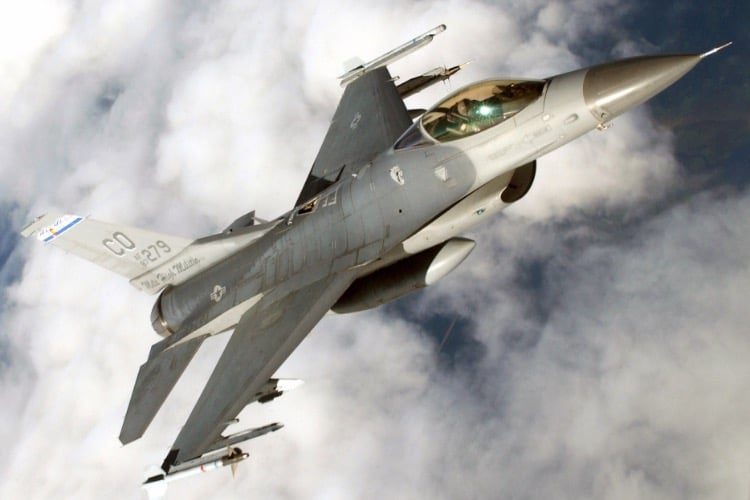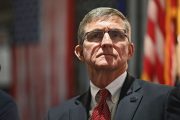
On May 19, President Joe Biden told Group of Seven (G7) leaders during the G7 summit in Hiroshima, Japan, that Washington approves of European allies training Ukrainian pilots to use fourth-generation U.S. fighter jets such as the F-16.
With the Democrat American leader’s authorization, the “fighter jet coalition” of European countries such as the U.K., the Netherlands, and Denmark can begin deploying F-16s to Ukraine later this year as well as train Ukrainian pilots on using the jets. Also, NATO allies would then discuss how many aircraft would be delivered to Ukraine.
With American support, training programs in Europe will start “in the coming weeks,” and are poised to last for months. Meanwhile, American officials contend that 18 months is about the “most expeditious” duration required for training and mobilization of F-16s.
In response to Biden’s announcement, Dutch Prime Minister Mark Rutte, “together with my British, Danish, and Belgian colleagues,” lauded American support and declared that the logistics would be sorted out in the coming weeks.
“Ukraine can count on the unwavering support of the Netherlands and its international partners,” he posted on Twitter.
Separately, U.K. Prime Minister Rishi Sunak tweeted that his country would “work together with the USA and the Netherlands, Belgium and Denmark to get Ukraine the combat air capability it needs. We stand united.” Moreover, both Belgium and France made statements in favor of training Ukrainian pilots as soon as possible but refrained from offering their own fighter jets.
Although the United States would not stop its allies from deploying their own American-made fighter jets to Ukraine, Washington has no public plans of sending its own aircraft at the moment. Recently, John Kirby, the National Security Council’s coordinator for strategic communication, declared that deploying American F-16s was “not on the [G7] agenda.”
Biden also affirmed in January this year that America had no plans to send fighter jets, though observers have wondered if he meant “never” or simply “not now.” Subsequently, American officials have maintained their stance on the basis that their F-16s were too expensive, and their technology too complex for effective and efficient training.
Along with NATO ally Germany, America has publicly expressed hesitancy in providing Ukraine with F-16 jets, for fear of further inciting Russia to retaliate with more military action. Both Berlin and Washington have adopted a “wait-and-see” attitude to preclude further conflict with Russia, especially if the jets go beyond the mere protection of Ukrainian territory.
Nonetheless, it is noteworthy that it could take America a significantly shorter duration than previously thought to train Ukrainian pilots to operate American-made fighter jets, according to U.S. Air Force documents.
These documents provided detailed studies from February and March of this year at an Air Force base in Tucson, Arizona, where Ukrainian pilots with experience flying Russian Su-27s and MiG-29s, but not any experience with American F-16s, were examined in simulators and evaluated by qualified Air Force instructors.
Despite having only a short orientation and no formal training, the two Ukrainian pilots were able to carry out difficult maneuvers in their simulated environments during the examination, the report said. Some of these maneuvers required technical skills, such as landing the aircraft after simulated engine loss and staging mock attacks.
“Given the current skill set demonstrated by the Ukrainian Air Force pilot … four months is a realistic training timeline,” the documents were cited as saying.
This estimation marks a considerable time gap from the 18 months that Colin Kahl, the former undersecretary of defense for policy, posited it would take to train Ukrainian pilots to fly F-16s, the report elaborated.
With its ailing stock of Soviet-era fighter jets and largely ineffective air defense systems vis-à-vis Russian missile technology, Kyiv is relying on Western fighter jets to boost its military prowess, without which Kyiv alleges that any counteroffensive would likely fail.
Ukrainian President Volodymyr Zelensky welcomed Biden’s declaration, as it would “greatly enhance our army in the sky. I count on discussing the practical implementation of this decision at the #G7 summit in Hiroshima.”
After a tour of Europe to garner more military support, Zelensky also attended an Arab League summit in Saudi Arabia. During his speech at the summit, Zelensky seemed to point fingers at some members of the Arab League, who, according to him, chose to “turn a blind eye” to Russia’s annexation of Ukrainian land and to its imprisonment of some Ukrainians during the 15-month conflict that began last February.
“I am sure we can all be united in saving people from the cages of Russian prisons,” he said.
“The Kingdom of Saudi Arabia plays a significant role and we are ready to take our cooperation to a new level,” Zelensky tweeted soon after arriving in Jeddah, alluding to how Saudi Crown Prince Mohammed bin Salman ensured the release of 10 foreigners captured by Russia in Ukraine last year, allegedly due to the Saudi royal’s close relations with Russian President Vladimir Putin.
To impede Russian military actions in Ukraine, G7 leaders unveiled a statement that highlighted new measures that would “starve Russia of G7 technology, industrial equipment and services that support its war machine.”
However, as the group admitted in their document, Western technology still manages to arrive in Russia through third countries. The alliance thus urged these countries to “immediately cease providing material support to Russia’s aggression, or face severe costs.”
On another note, the U.K. and the United States declared a new round of sanctions against Russia. The U.K. will legislate an import ban on Russian diamonds, copper, aluminum, and nickel, Sunak said.
Nonetheless, the impact of the new sanctions on Russia would be minuscule, as Russian exports of those commodities to the U.K. had already dropped after tariffs were implemented.
Across the Atlantic, Washington is taking aim at Russia’s gold sector, targeting two major Russian gold miners. Again, as with the U.K.’s sanctions, Russia had considerably shifted to Asia for its gold trade, rendering America’s sanctions largely ineffective.




